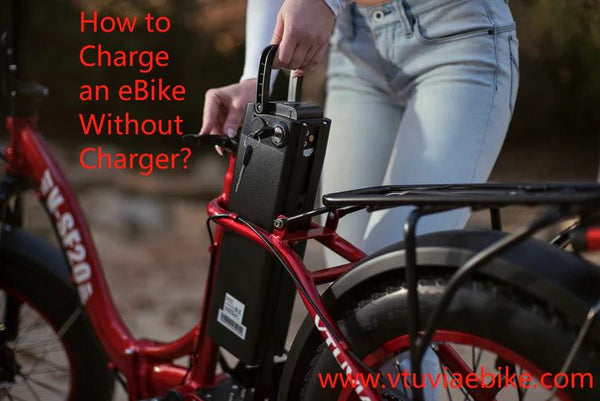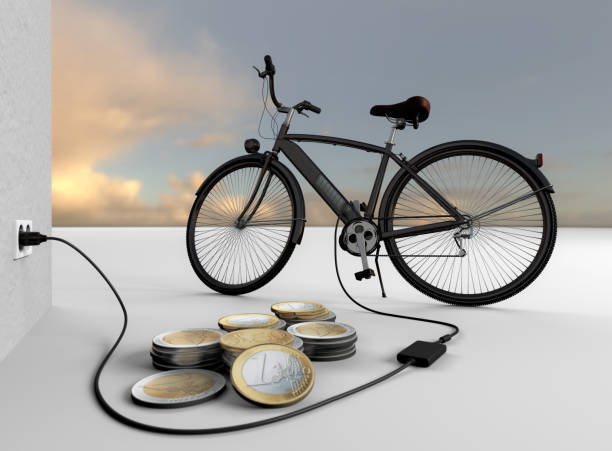If you’re an electric mountain bike owner, you know that taking care of your battery is crucial for optimal performance and longevity. That’s why we’ve put together the ultimate guide on charging best practices for your electric mountain bike’s battery. In this comprehensive article, we’ll walk you through easy-to-follow guidelines and expert advice to ensure that you charge your battery safely and efficiently. From understanding battery types to determining the ideal charging time and avoiding common mistakes, this guide has got you covered. So, whether you’re a seasoned rider or just getting started, let’s dive into the world of charging best practices for your electric mountain bike’s battery!
Charging Best Practices: How to Safely Charge Your Electric Mountain Bike’s Battery
Welcome to the ultimate guide on charging best practices for your electric mountain bike’s battery! In this comprehensive article, we will cover everything you need to know to ensure the safe and efficient charging of your e-bike’s battery. By following these guidelines, you will not only maximize your battery’s longevity but also ensure a smooth and worry-free riding experience. Let’s dive in!
Understanding Your Electric Mountain Bike’s Battery
Before we delve into charging best practices, it’s crucial to have a basic understanding of your electric mountain bike’s battery. Most e-bikes are equipped with Lithium-ion batteries, which offer a high energy density, long life, and low self-discharge rate. These batteries come in various capacities, typically measured in watt-hours (Wh), and can be charged using a compatible charger.
Choosing the Right Charger
When it comes to charging your electric mountain bike’s battery, using the right charger is imperative. Always ensure that you are using the charger specifically designed for your e-bike’s battery. Using an incompatible charger can not only result in inefficient charging but also potentially damage your battery.
Consult your e-bike’s user manual or contact the manufacturer to determine the correct charger model and specifications for your specific battery. Additionally, it’s essential to buy chargers from reputable sources to ensure their quality and compatibility.

Charging Cycles and Battery Longevity
Understanding charging cycles is crucial for preserving your battery’s longevity. A charging cycle refers to the process of charging your battery from 0% to 100% and then discharging it back to 0%. Lithium-ion batteries have a limited number of charging cycles before their capacity starts to degrade.
To maximize your battery’s lifespan, it is recommended to avoid frequent full discharges and charges. Instead, aim for shallow discharges and top-ups whenever possible. Partial charging cycles put less stress on the battery, allowing it to maintain a longer life.
Optimal Charging Methods
To ensure the optimal charging of your e-bike’s battery, follow these best practices:
-
Charge at a Moderate Temperature: Avoid charging your battery in extreme temperatures, as it can negatively impact its performance and longevity. Optimal charging temperature ranges are typically specified by the manufacturer and should be followed for the best results.
-
Charge in a Well-Ventilated Area: During the charging process, some heat is generated. To dissipate this heat and prevent any potential hazards, it is advisable to charge your electric mountain bike’s battery in a well-ventilated area, away from flammable materials.
-
Use a Dedicated Power Outlet: For the most reliable charging experience, plug your charger directly into a dedicated power outlet. Avoid using extension cords or power strips, as they can introduce voltage drops and lead to inefficient charging.
-
Avoid Rapid Charging: Although rapid charging may offer the convenience of a faster charge, it can generate more heat and put additional stress on the battery. Regularly using rapid charging methods can accelerate the capacity degradation of your battery, impacting its overall lifespan.

Charging in Extreme Temperatures
Extreme temperatures can have a significant impact on the performance and longevity of your electric mountain bike’s battery. Here’s what you need to know about charging in extreme temperatures:
-
Charging in Cold Temperatures: In extremely cold conditions, the battery’s capacity may temporarily decrease, resulting in slower charging times. It is advisable to charge your battery at a slightly warmer temperature to optimize charging efficiency. Additionally, do not attempt to charge a frozen battery, as it can cause irreversible damage.
-
Charging in Hot Temperatures: Charging your battery in high temperatures can lead to increased internal chemical reactions, which may accelerate capacity loss and reduce its overall lifespan. It is important to allow your battery to cool down before initiating the charging process if it has been exposed to extreme heat.
Avoiding Overcharging
Overcharging your electric mountain bike’s battery can be detrimental to its health and safety. To prevent overcharging, follow these guidelines:
-
Use a Charger with Automatic Shut-off: Invest in a charger that has an automatic shut-off feature. This ensures that the charger stops supplying power to the battery once it reaches its maximum capacity, preventing overcharging.
-
Avoid Leaving the Battery on Charge Unattended: While modern chargers have safety features, it is still recommended not to leave the battery on charge unattended for long periods. Regularly check on the charging progress and unplug the charger once the battery is fully charged.

Avoiding Undercharging
Undercharging your e-bike’s battery can also have adverse effects. It is essential to maintain an adequate charge level to prevent capacity loss and maximize the lifespan of your battery. Follow these tips to avoid undercharging:
-
Charge Regularly: Make it a habit to charge your battery regularly, especially if you haven’t used your electric mountain bike for an extended period. Keeping the battery adequately charged prevents self-discharge and helps maintain its overall health.
-
Avoid Storing a Fully Discharged Battery: If you are not planning to use your e-bike for an extended period, avoid storing the battery completely discharged. A fully discharged battery can enter into a deep discharge state, which may lead to irreversible capacity loss. It is recommended to store the battery at around 50% charge in a cool and dry location.
Storage and Battery Discharge
Proper storage is crucial for preserving your electric mountain bike’s battery when not in use. Follow these guidelines for safe battery storage:
-
Clean your Battery: Before storing your e-bike, clean the battery with a soft cloth to remove any dirt or debris. Keeping the battery clean prevents the build-up of contaminants that may affect its performance.
-
Ideal Storage Conditions: Store your e-bike and battery in a cool, dry place that is protected from extreme temperatures and direct sunlight. Ideally, the temperature should be between 0°C and 20°C (32°F and 68°F) for optimal battery storage.
-
Regularly Check Battery Charge: It is recommended to periodically check the battery’s charge level during storage and recharge it if the charge drops below 50%. This helps maintain the battery’s health and prevents it from entering a deep discharge state.
Maintaining Battery Health
To ensure the long-term health of your electric mountain bike’s battery, consider the following maintenance practices:
-
Avoid Complete Discharges: As mentioned earlier, frequent complete discharges can put additional stress on the battery and accelerate its capacity degradation. Aim for shallow discharges and recharge the battery as soon as possible.
-
Check for Firmware Updates: Manufacturers often release firmware updates for their e-bike systems that can optimize battery performance. Regularly check for updates and follow the manufacturer’s instructions to ensure your battery is up-to-date.
-
Inspect Battery Connectors: Periodically inspect the battery connectors for any signs of corrosion, dirt, or loose connections. Clean the connectors with a soft brush or cloth and tighten any loose connections to maintain a reliable electrical connection.
-
Consider Battery Conditioning: Some battery systems offer a conditioning mode, which can help balance the battery cells and optimize their performance. Consult your e-bike’s user manual to see if this feature is available and how to utilize it.
Troubleshooting Charging Issues
If you encounter any charging issues with your electric mountain bike’s battery, here are some common troubleshooting steps you can take:
-
Check Power Outlet and Charger: Ensure that the power outlet you are using is functioning correctly and that the charger is properly plugged in. Try plugging the charger into a different outlet to rule out any electrical issues.
-
Inspect Charger Connections: Examine the charger’s connections to ensure they are clean and free from any debris or corrosion. Clean the connections if necessary and ensure a secure connection with the battery.
-
Check for Error Codes or Warnings: Some e-bike systems have error codes or warning lights that indicate specific charging issues. Consult your user manual to identify these codes and take appropriate action accordingly.
-
Contact Manufacturer or Professional Help: If you have tried the above steps and are still experiencing charging issues, it’s best to contact the manufacturer or seek professional help. They will have the expertise to diagnose and resolve any complex charging problems.
By following these charging best practices and taking proper care of your electric mountain bike’s battery, you can ensure a longer lifespan, improved performance, and a more enjoyable riding experience. Happy and safe riding!





